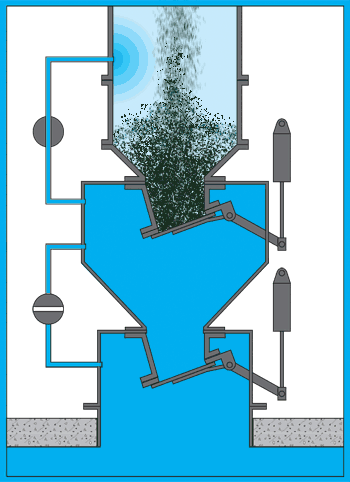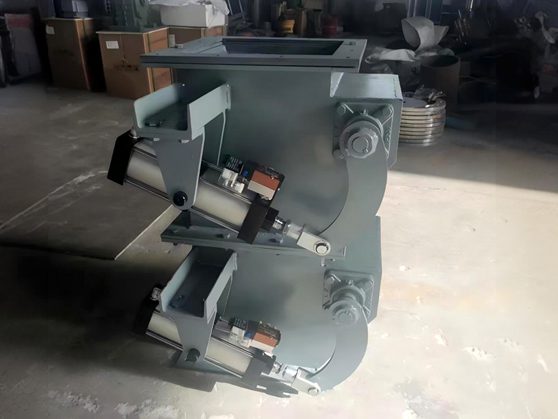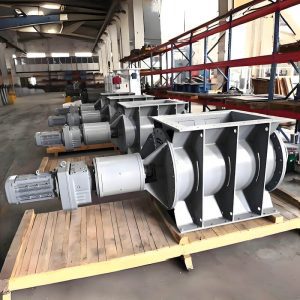How does a pneumatic double dump valve work?
The pneumatic double dump valve operates based on a simple yet effective mechanism designed for controlling the flow of materials in pneumatic systems. Here’s how it works:
- Pneumatic Actuation: A pneumatic actuator controls the opening and closing of the two flaps in the valve. When you apply air pressure, the actuator moves the flaps into the desired position.
- Flap Positioning: The valve has two flaps that overlap slightly. When the valve is closed, the flaps seal tightly against the valve body, preventing air or material from escaping.
- Flow Control: When the actuator is activated to open the valve, the flaps move apart, allowing materials to flow through. The overlapping design helps maintain an airtight seal when the valve is closed.
- Quick Operation: The pneumatic actuation allows for rapid opening and closing of the valve. This feature makes it suitable for applications that require quick material handling.
- Pressure Regulation: The valve is designed to maintain pressure within the system, minimizing air leakage and ensuring efficient pneumatic conveying.
- Feedback Mechanism: Many pneumatic double flap valves include sensors. These sensors provide feedback on the position of the flaps. This feedback allows for precise control and monitoring of the flow.

Applications of the pneumatic double dump valve
The pneumatic double dump valve is versatile and widely used in various industrial applications, particularly in pneumatic conveying systems. Here are some common applications:
| Size(mm) | 150*150 to 1000 *800 ,Higher size on request |
| Discharge Capacity(m3/h) | 6 to 80 |
| Temperature(℃) | -20 °C to 600 °C |
| Weight(kg) | 40 to 2600 |
- Bulk Material Handling: The valve transports and discharges bulk materials, including grains, powders, and pellets. You commonly find it in industries like food processing, agriculture, and chemicals.
- Dust Collection Systems: The valve integrates into dust collection systems. It controls airflow and prevents dust from escaping during material transfer, enhancing air quality and safety.
- Cement and Concrete Production: The valve regulates the flow of cement and additives in cement plants. This ensures precise dosing and material control.
- Pharmaceutical Industry: The valve handles powders and granules in the pharmaceutical sector, where you must prioritize hygiene and contamination prevention.
- Plastic and Polymer Processing: The valve processes plastic pellets and granules, allowing for efficient material transport without leakage.
- Mining and Minerals Processing: The valve transfers minerals, ores, and other bulk materials in the mining industry from one process to another.
- Food and Beverage Industry: The valve controls the flow of food ingredients, such as flour, sugar, and other powders, ensuring safe and efficient processing.
- Chemical Processing: The valve handles various powders and granules in chemical plants, where precise flow control is essential for maintaining quality and safety.
For more information or technical inquiries, please feel free to contact us. We are happy to assist you.
You may also like






